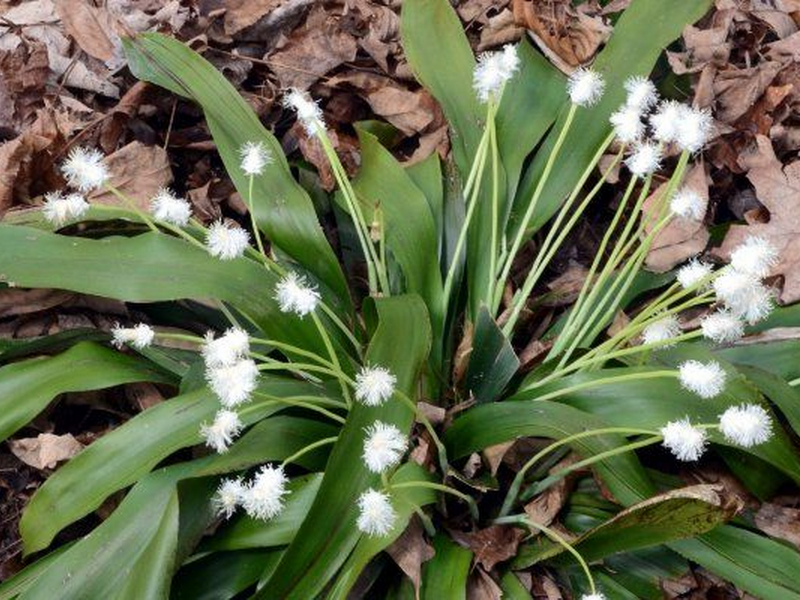Lily-Leaf Sedge
Carex fraseriana
Click here to download a PDF of this plant information page (for printing).

Sun Exposure: Part Sun, Shade
Season of Interest: All
Bloom Time: May - July
Bloom Color: White
Height: 12 to 16 in.
Spread: 14 to 20 in.
Spacing: 20 in.
Water Needs: Above averge
Maintenance: Prune old leaves
Soil Type: Clay, Loam, Sandy
Soil pH: Acidic, Neutral
Soil Drainage: Well drained, Moist
Pests: None
Diseases: None
Wildlife: Bees, Buterflies, Birds

Description:
The broad, straplike leaf of the lily-leaf sedge, apparently lacking several modern plant characteristics, is unique in in the family Carex. The plant was moved into its own family, Cymophyllus, because it does not resemble any other plant, but has recently been moved back to Carex following genetic analysis. Native to the foothills of the southern Appalachian mountains it is thought to be a relict, sharing the same ancestry as Carex, but has evolved the flat, "blade" of its leaf from an expanded bladeless sheath. Both the size and shape of its flower cluster indicate that unlike all other sedges, it is pollinated by insects rather than the wind. Lilly-Leaf Sedge is a striking plant with its broad, evergreen leaves and gleaming white flowers. It blooms from spring to early summer with foliage having leathery and evergreen drooping leaves. The white cluster of male flowers is held above the green cluster of female flowers. This plant, although extremely rare, is gaining popularity as a native alternative to hostas and other non-natives in shady areas of the garden. For more information see:
plants.ces.ncsu.edu/plants/carex-fraseriana
Care and Growing Tips:
When planted shady spot and watered during extended dry spells spot, lily-leaf sedge is very easy to grow. IT prefers acidic soils ranging in pH from 5.5 to 7.5. Most average garden soils fall between a pH range of 6.0 to 7.0. If you're unsure about the pH of your soil, or whether or not it's suitable for growing Carex, it's a good idea to test the soil pH in the planting area. You can quickly test soil pH with an inexpensive soil pH tester probe. To lower the soil pH (make it more acidic) you can apply sulfur, aluminum sulfate, or chelated iron. Adding organic compost to the soil or using compost as mulch will also increase acidity and maintain acid soil conditions.
Lily-leaf sedges are light feeders that require little if any fertilizer. However, if it is not thriving try an annual feeding in late spring or early winter with a natural or organic plant food or a slow-release low-nitrogen fertilizer can be used. Since this plant evergreen throughout most of its native range, it will require little if any pruning. Old leaves should be removed to approve the plants general appearance if desired and after an unusually cold winter that damages or discolors foliage, plants should be cut back by two-thirds their height to simulate new growth.